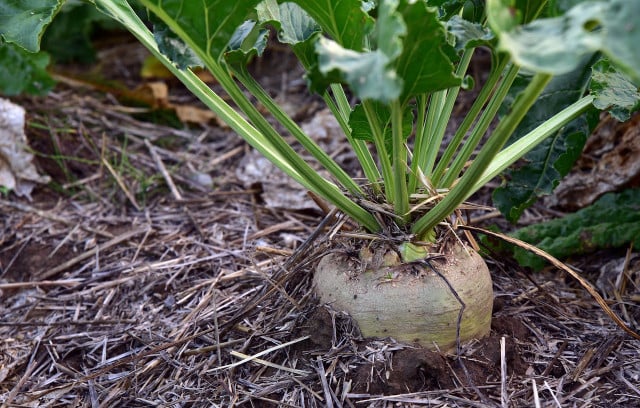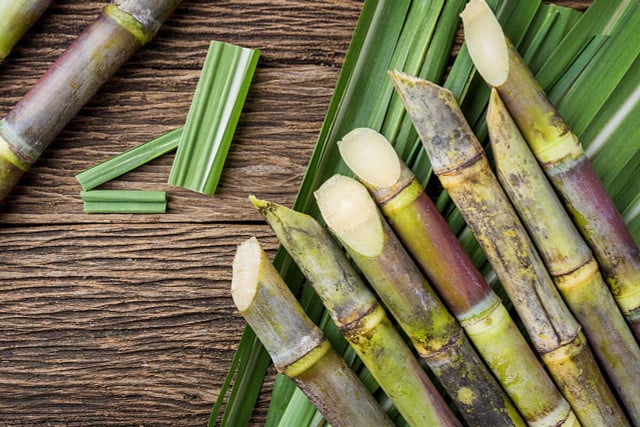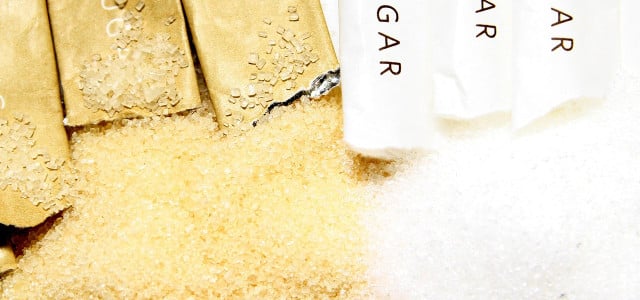While sugar beets and sugar cane may not look alike, they do share several qualities. We’ll take a closer look at these two plants, including their environmental impact.
Global sugar production is expected to hit the 182 million ton mark during the year from 2022 to 2023. The predominant sources of sugar extraction for this giant market are sugar beet and sugar cane crops. In terms of their chemical composition, beet sugar and cane sugar are nearly identical, as both contain large amounts of sucrose.
So what’s the difference between the two source plants, anyway? Below, we’ve outlined each crop’s characteristics with regard to cultivation, use, and sustainability.
If you’re more interested in the health aspects of sugar cane vs. sugar beet, and even other types of sugar and sweeteners, check out our deep dive into sugar.
Sugar Beet: A Regional Force

(Foto: CC0 / Pixabay / ulleo)
The sugar beet (Beta vulgaris) is a regional root crop that grows in temperate climates including many places in North America and Central Europe. According to the American Sugarbeet Growers Association, California, sugar beets are cultivated in Colorado, Idaho, Michigan, Minnesota, Montana, Nebraska, North Dakota, Oregon, Washington, and Wyoming.
Long before the sugar beet was recognized for its sugar content, it was planted as a garden crop and grown as fodder. Today, other uses are mainly derived from the sugar itself or the by-products of the sugar-making process, like pulp and molasses, which are used, among other things, as a livestock feed supplement.
Sugar Cane: Major Global Sugar Crop



(Foto: CC0 / Pixabay / WebTechExperts)
Sugar cane (Saccharum officinarum) is a tall grass plant that has been cultivated in tropical regions for thousands of years, spreading across the world from the Southern Pacific islands through Southeast Asia, India, and China and later to the Americas. Today, Brazil is the leading sugar cane producer worldwide. In the United States, the plant is grown in Florida, Louisiana, and Texas.
Of the 180 million metric tonnes of sugar produced worldwide annually, 80 percent is extracted from sugar cane and only 20 percent from sugar beets. However, it is worth noting that over the past two decades, sugar cane has accounted for only approximately 45 percent of sugar produced in the U.S., with sugar beets taking the lead in domestic sugar production.
Besides its sweet qualities as a food product, sugar cane can also be turned into energy (biofuel, for example) or used to make rum from molasses.
Sugar Beet vs. Sugar Cane: Similarities & Differences



(Foto: CC0 / Pixabay / fish96)
The most apparent difference between sugar beets and sugar cane is how the two plants look and how they grow: one a root that matures below the soil, the other tall, like bamboo, and above ground. These facts make all the difference in terms of how each crop is grown and harvested.
Slightly different are also the stages of processing or refining sugar. Little processing is needed to turn sugar beets directly into refined sugar at a single site. Sugar cane, on the other hand, requires a little more effort: One factory mills sugar cane into raw sugar, while another refines the raw sugar. Learn more about the processing stages in our deep dive into sugar.
The question of how sustainable each crop is is tied to its cultivation and the way it is later processed. While both plants raise certain concerns, some significant differences become visible when studying the environmental impact of sugar production.
- The WWF warns that although many of the environmental effects of growing cane and beets are common to all forms of agriculture, certain impacts of sugar crop production are uniquely severe. Particularly worrisome are the effects of sugar cane irrigation and pollution runoff.
- Though there are some irrigation problems involving sugar beet, the fact that it has a deeper root system and can access water deep in the soil makes it more resistant to underwatering. Sugar cane is a bigger concern because it is a water-intensive crop.
- Another study carried out in the EU has revealed that sugar cane crops require a lot more land — a whopping 51 percent — than sugar beet crops to produce the same quantity of sugar and related products. This has led to widespread habitat destruction and dramatic declines in biodiversity. The Everglades wetland habitat is one example of land that has suffered these effects due to reclaiming land for the expansion of agriculture.
- However, according to estimates, only 3-5 percent of soil is lost during sugar cane harvest, and 10 percent is lost during beet sugar harvest (WWF).
- Another problem involving sugar cane, but not sugar beet, is the practice of burning cane fields before harvest. Though discontinued in some places, it is still common in sugar cane fields in Florida. While this is a cheap and simple way of processing cane, it is also highly toxic for humans and the environment. A 2010 study on sugar production in Brazil found that a significant part (44 percent) of greenhouse gases emitted during sugar cane production results from burning practices. According to the authors, converting this system to a green harvest system could greatly reduce emissions in the sector.
- Because it is often associated with sub-par working conditions and low pay in poorer countries, sugar cane has often been referred to as the “hunger crop.” With tighter regulations regarding working conditions in countries where sugar beet is primarily produced, this crop is perhaps more sustainable in terms of social responsibility.
Read more:
- Homemade Sugar Lip Scrub: An Easy DIY Recipe
- Is Brown Sugar Vegan? The Truth & Vegan Sugar Brands
- Coconut Trees vs. Palm Trees: What’s the Difference?
Do you like this post?







